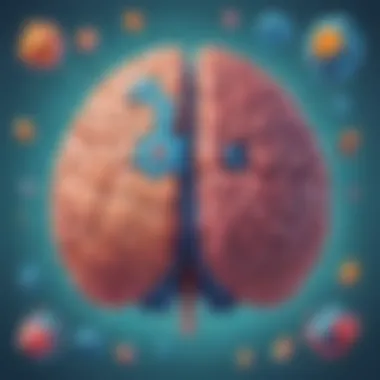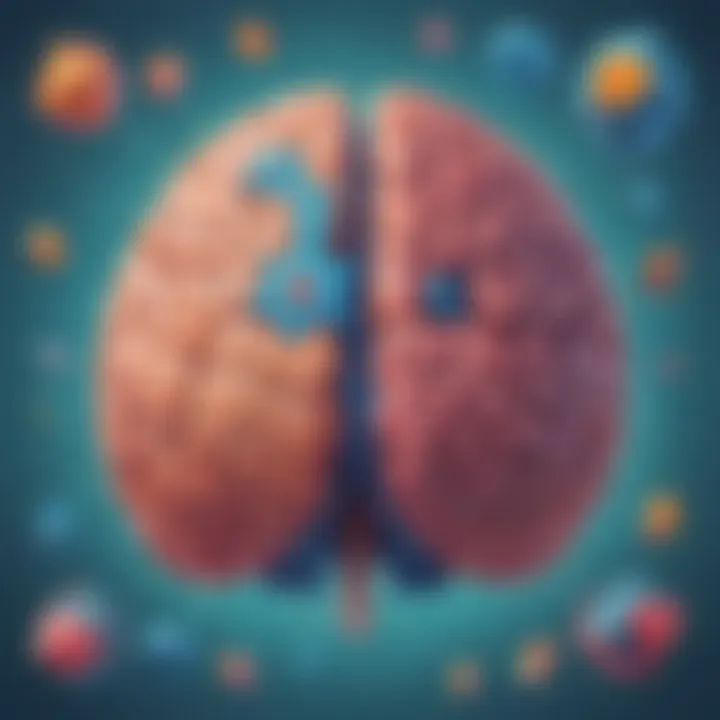Engaging Simple Riddles for Elementary School Kids: Fun Brain Teasers with Answers


Creative Activities
Fun Quizzes
Transitioning to the realm of fun quizzes, it is imperative to recognize the interactive and engaging nature that quiz topics bring to the learning experience. By listing diverse topics covered in the quizzes available on Elem Fun, we cater to a wide range of interests and knowledge domains, keeping children curious and eager to learn. Explaining the variety of question types used in these quizzes sheds light on the dynamic challenges children encounter, from multiple-choice to riddles, enhancing their cognitive flexibility. The quizzes not only offer entertainment but also serve as a mechanism for reinforcing acquired knowledge, making learning a fun and rewarding journey.
Fact-Based Articles
Continuing our exploration, fact-based articles offer a wealth of information presented in an engaging and easy-to-understand manner. Covering a diverse range of topics ensures that children have access to a broad spectrum of knowledge, creating opportunities for exploration and discovery. The engaging content within these articles captivates young readers, sparking their curiosity and encouraging them to delve deeper into various subjects. Additionally, providing links to related articles and external resources promotes further exploration, empowering children to expand their understanding and dive into new realms of learning.
Introduction to Simple Riddles
Simple riddles offer an excellent opportunity for elementary school children to engage their cognitive abilities. These brain teasers are not only delightful but are also essential in honing critical thinking skills and fostering creativity. By delving into the world of riddles, kids can enhance their problem-solving skills while having fun.
Understanding the Appeal of Riddles
Engaging Critical Thinking
Engaging Critical Thinking is a fundamental aspect when solving riddles. It prompts children to analyze information, think logically, and draw conclusions. This enhances their ability to think critically, a skill crucial for academic and real-life application. By challenging their minds through critical thinking, kids develop a sharper intellect and analytical prowess.
Enhancing Problem-Solving Skills
Enhancing Problem-Solving Skills through riddles is a fun yet effective method for children to learn how to overcome challenges. By deciphering clues and piecing together information, they develop a strategic approach to problem-solving. This not only boosts their confidence but also equips them with valuable skills for tackling complex tasks in the future.
Benefits of Solving Riddles
Boosting Cognitive Abilities
Solving riddles boosts cognitive abilities by engaging children's brains in a stimulating manner. It enhances their memory, concentration, and overall mental agility. By tackling puzzles that require lateral thinking, kids can expand their cognitive capacity and develop a deeper understanding of various concepts.


Fostering Creativity
Fostering Creativity is a key benefit of riddle solving as it encourages children to think outside the box. By exploring multiple perspectives and imaginative solutions, kids unlock their creative potential. This creativity transcends into other areas of their lives, making them more innovative problem solvers and adaptable thinkers.
Purpose of Simple Riddles in Education
Stimulating Learning
Simple riddles serve as effective tools for stimulating learning in a dynamic and engaging way. By presenting information in a puzzle format, children are motivated to actively seek solutions, enhancing their retention and comprehension. This interactive learning approach fosters a deeper appreciation for knowledge and promotes a love for continuous discovery.
Encouraging Active Participation
Encouraging Active Participation through riddles empowers children to take an active role in their learning process. By inviting them to interact with the material and contribute their thoughts, riddles promote a hands-on educational experience. This active participation not only reinforces learning but also instills a sense of ownership and responsibility for one's academic journey.
Mind-Bending Simple Riddles
Mind-Bending Simple Riddles play a crucial role in this educational piece, offering young minds a chance to delve into the realm of critical thinking and problem-solving. These riddles serve as mental exercises, honing analytical skills in a fun and engaging manner. By presenting challenges that require logic and lateral thinking, Mind-Bending Simple Riddles help children explore new ways of approaching problems and developing creative solutions. In the context of this article, these riddles serve as mental gymnastics, stimulating young brains and fostering a love for intellectual puzzling.
Riddle 1: The Classic Who Am ?
Answer
The answer to Riddle 1 unveils the subtle yet satisfying solution behind the enigmatic character. By revealing how clues align to form a coherent answer, children enhance their deductive reasoning skills and learn the value of paying attention to details. The answer's simplicity belies the complexity of thought processes it elicits, making it a valuable addition to this article's collection of riddles. The clarity and elegance of the answer demonstrate the beauty of logical deduction, reinforcing the importance of systematic problem-solving in educational settings.
Riddle 2: What Has a Head and a Tail, But No Body?
Answer
Unveiling the answer to Riddle 2 reveals the clever twist behind the seemingly impossible scenario. By showcasing how the solution aligns with the riddle's setup, children learn the value of exploring alternative viewpoints and embracing creativity in problem-solving. The answer's unexpected nature challenges preconceptions and encourages flexibility in reasoning, reinforcing the importance of open-mindedness and adaptability in tackling challenges. In the context of this article, the answer to Riddle 2 exemplifies the exciting possibilities that arise from thinking beyond the obvious.
Riddle 3: Speak Without a Mouth and Hear Without Ears. What Am ?


Answer
Revealing the answer to Riddle 3 demystifies the metaphorical conundrum it presents, unveiling the symbolic meaning behind the seemingly paradoxical statement. By interpreting the answer, children delve into the power of figurative language and gain insights into how words can transcend literal meanings. The answer's elegance lies in its transformative quality, where a seemingly nonsensical premise reveals profound truths about communication and perception. In the context of this article, the answer to Riddle 3 showcases the beauty of linguistic exploration and the wonders of symbolic expression.
Fun with Numbers: Math Riddles
Fun with Numbers: Math riddles play a crucial role in this educative piece centered on engaging simple riddles for elementary school kids. Math riddles not only foster critical thinking but also enhance numerical skills in a playful manner. By delving into mathematical concepts through riddles, children can develop problem-solving abilities while enjoying the process. Introducing math riddles in this collection adds a dimension of logical reasoning and analytical thinking, offering young learners a fun and challenging way to explore numbers.
Riddle 4: Am an Odd Number. Take Away a Letter and Become Even. What Am ?
Answer
The answer to Riddle 4 is 'Seven'. Through deductive reasoning and logical analysis, children can decipher that by removing the letter 'S', the word 'Seven' transforms into the word 'Even', signifying a shift from an odd number to an even one. This riddle's play on language and numbers not only encourages linguistic skills but also enhances mathematical deduction capabilities. The interplay between letters and numerical values offers a multidimensional challenge, making the answer both satisfying and enlightening for young learners.
Riddle 5: What Comes Once in a Minute, Twice in a Moment, But Never in a Thousand Years?
Answer
The answer to Riddle 5 is 'The Letter 'M''. By discerning the clues embedded in the riddle's structure, children can deduce that the letter 'M' appears once in the word 'Minute', twice in 'Moment', but never in 'Thousand Years'. This solution not only sharpens children's observational skills but also introduces them to the subtleties of language structure and wordplay. Riddle 5 serves as a linguistic journey through time-related vocabulary, showcasing the creative potential of language riddles as vehicles for intellectual exploration.
Riddle 6: If You Add Me to Myself and Multiply by , You Will Get 100. What Number Am ?
Answer
The answer to Riddle 6 is 'Twenty'. By combining the number with itself (20 + 20 = 40) and then multiplying the sum by 4 (40 x 4 = 160), children can deduce that the number 'Twenty' fulfills the given conditions, equating to 100. This riddle's emphasis on mathematical operations and numerical relationships stretches children's computational abilities, fostering a sense of mathematical fluency and logic. Riddle 6 serves as a numerical workout that challenges children to apply arithmetic principles creatively and systematically.
Wordplay and Language Riddles
Simple riddles that involve wordplay and language play a crucial role in enhancing children's cognitive abilities. These riddles not only stimulate critical thinking but also foster linguistic skills and creativity. By engaging in wordplay, children are challenged to think outside the box, interpret language in new ways, and sharpen their communication skills. Wordplay riddles encourage kids to pay attention to subtle linguistic nuances and develop a deeper appreciation for the richness of the English language. Additionally, these riddles promote a joyous learning experience, making language exploration fun and interactive for elementary school students.
Riddle 7: The More You Take, the More You Leave Behind. What Am ?


Answer:
The answer to this riddle is 'Footsteps.' By taking steps, one leaves footprints behind, creating a poetic connection between action and memory. This answer not only fits the premise of the riddle but also opens the door to a deeper conversation about the significance of our actions and their lasting impact. 'Footsteps' exemplifies how wordplay riddles can convey profound ideas in a concise and thought-provoking manner, showcasing the beauty of language and its ability to evoke imagery and emotion in the young minds of elementary school students.
Riddle 8: What Has Keys but Can't Open Locks?
Answer:
The answer to this riddle is 'A Piano.' While keys on a piano are not used to unlock physical locks, they play a fundamental role in producing musical harmonies. This answer encourages children to consider the versatile nature of keys and appreciate their multifaceted symbolism. By solving this riddle, students learn to appreciate the richness of language and the power of metaphors to convey complex concepts in a succinct and engaging manner.
Riddle 9: Am a 7-Letter Word. If You Take Letters Away, Sound the Same. What Word Am ?
Answer:
The answer to this riddle is 'An Earner.' By removing 'e' and 'a' from 'earner,' the word maintains its pronunciation while losing two letters. This solution underscores the intricacies of English spelling and pronunciation rules, demonstrating how slight modifications can preserve the word's sound structure. 'An Earner' exemplifies how wordplay riddles can blend linguistic challenges with creative problem-solving, offering elementary school students an entertaining and educational language experience.
Conclusion
The Power of Riddles in Learning
Promoting Critical Thinking
Within the realm of Promoting Critical Thinking, lies a treasure trove of opportunities for young learners. By engaging with complex and thought-provoking riddles, children are encouraged to think outside the box and explore multiple solutions to a single problem. This aspect of critical thinking not only enhances their analytical skills but also nurtures a predisposition towards logical reasoning. The unique feature of Promoting Critical Thinking is its ability to cultivate a deep sense of resilience and adaptability in children, equipping them with essential tools for facing challenges in the academic sphere and beyond.
Encouraging Curiosity
Encouraging Curiosity serves as the cornerstone of successful educational practices, especially in the context of solving riddles. By instilling a sense of wonder and inquisitiveness in young minds, riddles become more than mere puzzles; they become gateways to exploration and discovery. The key characteristic of Encouraging Curiosity is its capacity to ignite a passion for learning and unraveling mysteries. Through the lens of riddles, children embark on a journey of self-discovery and intellectual growth, paving the way for a lifelong love affair with knowledge.
Embracing the Fun in Education
Creating Enriching Learning Experiences
Creating Enriching Learning Experiences through riddles transcends the traditional boundaries of education. By infusing joy and excitement into the process of learning, riddles turn mundane tasks into engaging adventures. The key characteristic of this approach is its ability to blend entertainment with education seamlessly, creating a harmonious environment for knowledge acquisition. The unique feature of Creating Enriching Learning Experiences is its power to spark a sense of joy and fulfillment in students, making the pursuit of knowledge a pleasurable endeavor.
Inspiring a Love for Problem-Solving
Inspiring a Love for Problem-Solving through riddles is a transformative experience for young learners. By presenting challenges in a playful and interactive manner, riddles ignite a passion for unraveling complex problems and finding innovative solutions. The key characteristic of this approach is its ability to nurture a growth mindset in children, encouraging them to embrace challenges with enthusiasm and resilience. The unique feature of Inspiring a Love for Problem-Solving is its capacity to instill confidence and self-belief in children, empowering them to tackle obstacles with zeal and determination.







